How Drones are Advancing Scientific Research
Where once scientists could only observe earth from above by using manned aircraft or satellites, today they are expanding, developing and refining their research in a variety of ways thanks to drones.
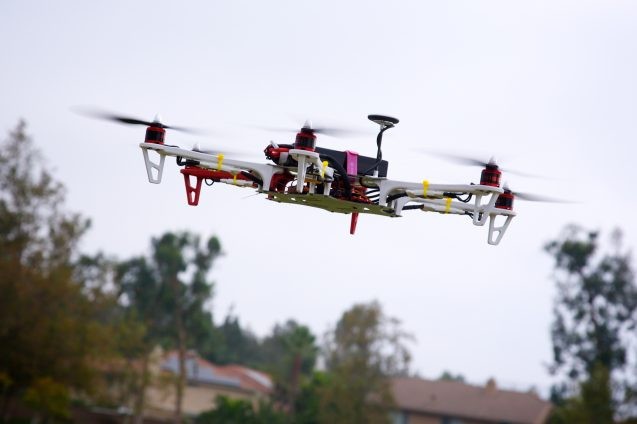
Drones, or unmanned aerial vehicles (UAVs), have been around since the early 1900s. Originally used for military operations, they became more widely used after about 2010 when electronic technology got smaller, cheaper and more efficient, prices on cameras and sensors dropped, and battery power improved. Where once scientists could only observe earth from above by using manned aircraft or satellites, today they are expanding, developing and refining their research thanks to drones.
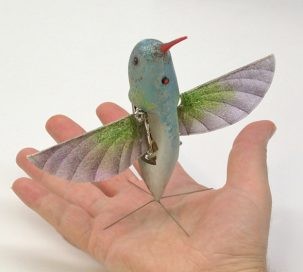
Drones can range from the size of airplanes to the size of bumblebees. They comprise part of unmanned aircraft systems that have a controller on the ground, and some form of wireless communication (usually radio signals) between the operator and the drone. Most small drones are powered by lithium-polymer batteries, while larger ones may use airplane engines. Many drones are made of carbon fiber making them light and easy to land without disturbing the environment. The Federal Aviation Administration requires that drones remain within the operator’s line of sight; larger drones that fly longer distances must obtain more involved licenses that allow them to fly outside of the line of sight.
Depending on their mission, drones are equipped with different payloads or equipment. Digital cameras can identify plants and animals, and help create 3-D maps. Thermal cameras detect heat from living creatures like animals or stressed plants, as well as from water. Hyperspectral imaging identifies features of plants and water through measuring reflected light and can interpret a wider range of wavelengths than the human eye can see. LiDAR, which measures how long it takes for an emitted pulse of light to reach a target and return to the sensor, can be used to calculate the distance to an object and its height, which is used for 3-D maps.
Drones monitor rivers to help predict flooding. They identify areas that are being illegally logged. They can discern the spread of algae in water bodies, as well as saltwater intrusion. They identify plant species and detect forest tree disease.
In the energy industry, drones are being used to identify methane leaks in oil and gas production, and to monitor pipelines and wind and solar installations.
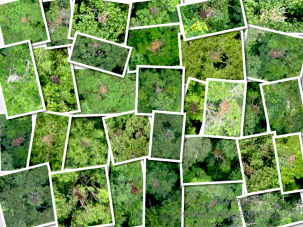
Drones are tracking sea mammals, counting animal populations and monitoring enforcement in marine conservation areas. Duke University drones recently showed that gray seals are returning to the New England and Canadian coasts due to conservation efforts. Researchers at Ocean Alliance, a Massachusetts-based whale conservation organization, used drones flying low above a whale to capture spray from the creature’s blowhole. They then analyzed the collected DNA to study the whale’s microbiome, stress and pregnancy hormones. Drones are also being used to keep an eye on endangered species and to combat poachers. While protecting wildlife with drones seems like an obvious application, there has not been much research done on the actual effects of drones on wildlife. One study on bears showed that they were stressed by the presence of drones.
Some scientists from the Earth Institute’s Lamont-Doherty Earth Observatory are using drones to expand their research as never before.
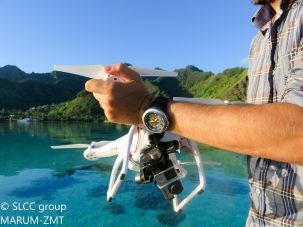
Alessio Rovere, junior research group leader of the Sea Level and Coastal Changes group at MARUM (University of Bremen)/Leibniz ZMT, and adjunct research scientist at Lamont-Doherty, studies coastal erosion, mangrove communities as well as the distribution of corals and the death of shallow corals (if coral bleaching is severe, drones can see it from above). In his work around the world, he uses off-the-shelf drones whose batteries last 10 to 15 minutes. The drones take many pictures at short intervals, which are later merged through software and algorithms to construct a seamless image of the area and a 3-D digital elevation model. Because coastal areas change rapidly, repeat flights at short intervals can show differences in conditions, for example, before and after a storm.
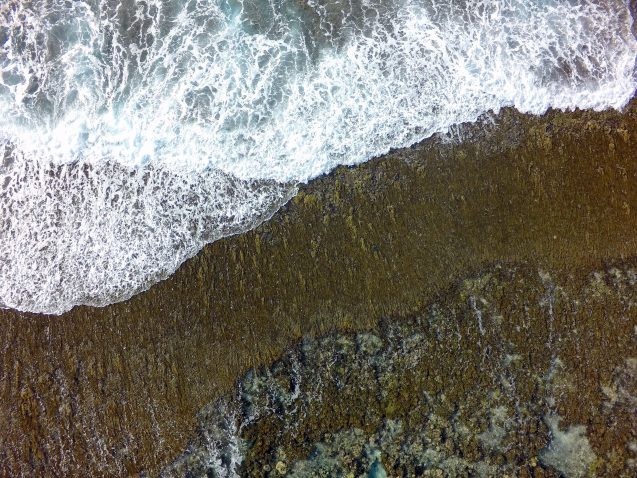
“Drones make it easy to get a very detailed view of a small area where you want to have elevation measures,” said Rovere. “If I had to do a beach survey before I started to use drones, the typical thing to do is to put a GPS on your backpack and walk along the beach to actually measure points on the beach…Now a drone can fly above our heads, cover the same area and get much higher resolution pictures. It saves you time and allows you to gather much higher detailed data.”
For small areas, it’s a powerful tool to have, he said. For big areas, he thinks it might be more convenient to have sensors mounted on a plane or use a bigger drone that can cover more area and has a longer flight time.
Einat Lev, a Lamont assistant research professor, studies volcanoes with the aim to improve eruption hazard assessments and predictions. She used a drone equipped with a camera to take thousands of photos of the 2014-2015 lava flow of the Holuhraun volcano in Iceland, one of the largest lava flows in recorded history. The photos are being used to create a 3-D digital topographic map of the flow. LiDAR scanned the topography of the main vent and a thermal camera recorded temperatures at cracks and hot springs. Because Lev and her colleagues visited the volcano not long after it erupted, the lava flow was still unstable and hot.
“The biggest advantage of using drones is that they can take you places that are very difficult to get to…We couldn’t map the structure of the lava flows in Iceland in the interior part of it because it was just too difficult to reach, and the drone just flies above and gets us that data,” said Lev in a video about her work.
Christopher Zappa, a Lamont associate research professor, specializes in ocean and climate physics.
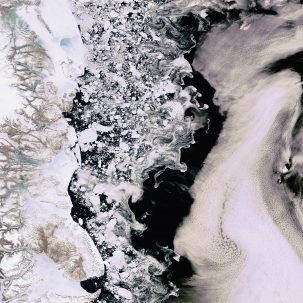
In the marginalized zones (transition zones between open ocean and sea ice) of the Arctic and in the tropics, he studies how the atmosphere generates waves through wind, how waves break, and how that energy injected into the ocean affects the transfer of gases, heat and energy between the ocean and the atmosphere. Zappa uses large fixed wing drones with wingspans of 10 to 12 feet and 5 to 6-foot fuselages. These sophisticated unmanned aerial systems that can fly up to 24 hours and carry payloads of 10 lbs, require two ground crew, two flight crew and a lot of technical expertise.
Zappa developed six payloads for drones, miniaturizing technology that he previously used on ships or manned aircraft:
- Infrared imaging tells the temperature of any surface, whether ocean, ice or land. The temperature maps help determine rates of exchange between the ocean and atmosphere; the stages of ice growth, melt or refreezing; the temperature of the meltwater relative to ocean water and how sea ice drifts.
- Visible hyperspectral camera can show when ice breaks up and sunlight penetrates, which can influence when phytoplankton blooms occur. Since phytoplankton absorbs solar radiation, this may lead to more ocean heat close to the surface, which can affect ice melt.
- Near infrared hyperspectral imaging shows surface properties, and can reveal the ages of sea ice.
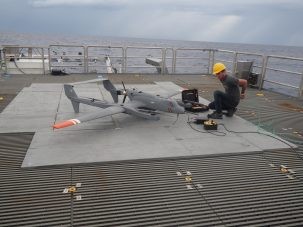
- Broadband long wave/short wave radiation measures how much solar energy is coming from the sun, how much is absorbed by the surface and how much is reflected back to the atmosphere.
- Meteorological turbulent fluxes measures fluxes of momentum, heat and water vapor over the ocean. This payload also includes LiDAR which can measure ocean waves that break up the ice, and determine how much ice lies out of the water and how thick is is.
- Drone deployed micro-drifter is a soda-can-sized pod ejected from the drone. As it falls, it analyzes the atmosphere for temperature, water vapor and pressure. In the ocean, it becomes a micro-buoy and measures the temperature and salinity of the ocean surface at different depths. The pod conveys atmospheric information in real time back to the drone where it is stored. The ocean data is kept onboard the micro-pod; once it sees the drone, it transmits the information.
Zappa is currently developing sea ice radar that will measure sea ice thickness.
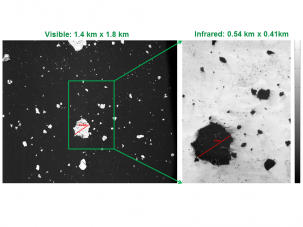
“I use all these instruments in general, but we always used them from platforms that are very big and bulky [ships]. One thing drones allow us to do is get away from these superstructures that may or may not affect the environment,” said Zappa. “These UAVs [drones] allow me to get away from the ship and measure everything I want to measure in undisturbed ocean.”
“Most oceanographers never cared about the top 10 meters of the ocean where the water is going to be disturbed by the ship,” he said. “But everything I do is related to the top 10 meters of the ocean and the bottom 10 meters of the atmosphere, right where they interact. So for me, it’s critical to get away from the ship or look at areas undisturbed by the ship, both in the atmospheric side and the ocean side. Drones allow me to do this very nicely.”
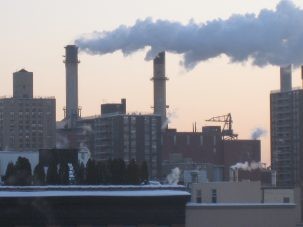
Markus Hilpert, an associate professor of environmental health sciences at Columbia University’s Mailman School of Public Health, is collaborating with Lamont-Doherty on developing a drone to measure air pollution emitted by industrial smokestacks. Most air pollution data comes from ground measurements, but drones will enable the scientists to gather data about pollution at different altitudes to study how pollutants disperse in the environment. Without a drone, it would be difficult and dangerous to gather this kind of information.
At the University of Nebraska, the NIMBUS (Nebraska Intelligent MoBile Unmanned Systems) Lab is developing a variety of capabilities for drones. Prescribed fires, traditionally done by hand or helicopter, help eradicate invasive species and control wildfires by safely getting rid of excess vegetation that might otherwise catch fire. NIMBUS has developed a drone that drops ping-pong ball-sized fireball igniters. As the drone flies, the balls of ignition material are injected with alcohol then dropped to the ground. Seconds later, they burst into flames. They can be dropped in a straight line or in a particular pattern in areas that might be too dangerous or difficult to access in other ways.
NIMBUS has also developed drones that can measure the height of crops, which allow scientists to study crop health and reaction to environmental factors. Flying close to crops, the drone uses a 2-D laser scanner to estimate crop height. Scientists here are also developing a drone that can pick leaves off crops so that they can be analyzed for crop health or to determine the identity of a weed.
The Nebraska lab’s drone-mounted water sampling system can monitor water quality, locate toxic algae and find invasive species in hard to access areas. The drone uses a one-meter long tube to suck up water as it flies over the water body. The water is stored in vials on the drone and is measured for temperature and salinity. Some day drones could potentially carry miniaturized genetic sequencing instruments that would enable them to analyze the DNA in the samples to identify disease, and endangered or invasive species.
NIMBUS is also working on a drone that can fly to a remote sensor, determine if its battery needs to be recharged and wirelessly recharge it. Since drones could do this repeatedly, they can keep all sensors operating continuously so no data is lost. Scientists are also exploring a drone that can retrieve data from underwater ocean sensors that are able to surface.
Like the NIMBUS scientists, Zappa is a pioneer pushing the boundaries of drone capabilities. He would one day like drones to be able to fly over the ocean and measure atmospheric gases with precision. He dreams of fleets of drones with different payloads flying in formation, and he has a vision for a hybrid system combining a drone with an underwater vehicle that could fly, land on the ocean, become a submersible and sample underwater, then surface, take off and sample the atmosphere.

Drones are constantly being improved—being made smaller, cheaper and more capable. But while they have tremendous potential for scientific research, they have some drawbacks. Smaller ones cannot fly out of the controller’s line of sight, limiting the size of the area that can be studied. Larger ones need a lot of people to run them and serious technical expertise to fly them. There is also the risk of losing a drone through accidents. And because drone use in science is still in its infancy, scientists are building the guidelines as they go, finding their way programmatically, with funding agencies and with restrictions on flying them.
“What’s beautiful about drones is they do provide a new territory for making measurements which was not possible before,” said Zappa. “But you still want to use the best possible instrument and platform for whatever experiment you’re doing…. sometimes it would be the UAV, sometimes not…You want to identify the tool that’s most useful for your science goal.”
